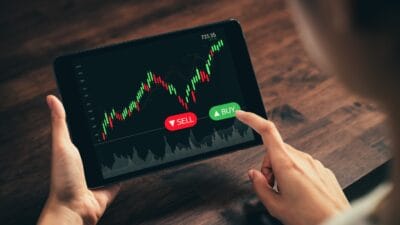In April next year, we’ll all start to feel a lot poorer.
How much poorer is open for debate — I’ve seen figures estimating that the average household will be £1,700 a year worse off, but also figures of around £3,000. Either way, that’s a lot of money.
The clue as to why is that reference to April. That’s when the tax rises contained in the last Budget will hit. And even Rishi Sunak, the chancellor of the exchequer, is conceding at that point, tax as a percentage of GDP will be at its highest since the 1950s.
Inflation’s nasty bite
But wait a minute. People are already feeling poorer. I’ve talked about inflation before, of course. Now, however, you can see it in the prices that we pay for everything.
Groceries, fuel, energy costs: everything is getting more expensive. I can see it; you can see it — and now, at long last, even the Bank of England is seeing it, with the Consumer Price Index standing at 4.2%. And yes, I still think that it is underestimating the level to which inflation will rise by early next year — just as it has done since the summer.
And that is having an effect on consumer spending — even now.
Let me share some figures with you from a press release put out by Hargreaves Lansdown a few weeks ago, based on the Bank of England’s monthly Money and Credit report. Between the start of the pandemic and April this year, there were only two months in which UK consumers charged more to their credit cards than they paid off. But since May, this has happened in five of six months.
The pandemic-induced savings boom, back when those of us with incomes had nothing to spend those incomes on? Forget it. A third of consumers are saving nothing each month, reckons Hargreaves Lansdown’s senior personal finance analyst, Sarah Coles. And almost half of us wouldn’t have enough savings to last for three months, she adds.
Sectoral swoons deliver bargains for the bold
What to do? No, I’m not going to exhort you all to cut back on the lattes and foreign holidays (Ha! Some chance, I hear you say.) And no, I’m not going to counsel you to mortgage granny, and buy shares.
I think another course of action beckons, instead.
In general, I’m a ‘bottom up’ investor, looking for undervalued companies. But occasionally, the macro picture is a bigger influence on me. Five years ago, for instance, the commodities market swooned. As I’ve written before, mining and resources firms — and those firms that supply them — looked like screaming buys, and I bought.
The shares of Australian miner BHP Group, for instance, traded below £6. Today, they are over £20. Etc, etc.
And now, the prospect of poorer consumers heralds another opportunity.
Can’t spend; won’t spend
Only this time, it’s a double opportunity — an opportunity to first re-position portfolios, and then buy in, when prices are low.
For the investment thesis is very simple: consumer discretionary expenditure is about to slump. Post-Christmas, I’m expecting significant belt-tightening, with further belt-tightening to come in April, when those tax rises hit.
And for businesses that rely on consumer discretionary spending, that doesn’t spell good news.
Eventually, the lean times will fade. The 1950s were followed by the 1960s. The macroeconomic environment will eventually improve, and tax burdens lessen.
But until that starts to happen, I’m bearish regarding shares that rely on consumers feeling flush with cash. Eventually, those shares will be ‘buys’ again — bargains, even, for those investors who select the right entry point. But not right now.







